I'm trying to turn on a power LED using LM555 timer as input signal of IRF630N N-channel power MOSFET as Fig1.
 Fig1. pulse generator and switching circuit.
Fig1. pulse generator and switching circuit.
- Here is the output of LM555 Timer (Not connected to MOSFET). How can I remove the beginning upper voltage as Fig2 (voltage in red circle)? I need exactly a clean square pulse.
- When output of 555 timer is connected to gate voltage is completly changed as shown in Fig.3. Why this is happening?
Fig3. output of timer connected to gate.
- t on is 1us, and t off is 9us. Drain voltage (blue diagram) is supposed to be like Fig.4. How can I remove ringing shape of drain voltage?
- When a big time division is used (more than 200 ms) Drain output is like Fig.5. When I zoomed in the image timer555 out pulse wasn't square, and also it seems Mosfet does not switch good. What should I do?
 Fig.5. Output for 500ms time division.
Fig.5. Output for 500ms time division.
Is there other ways for pulse generating (t on 500ns - 1us and t off > 1us)? Any help is appriciated.
update1: Power LED link.
update2: Final application Images added.


